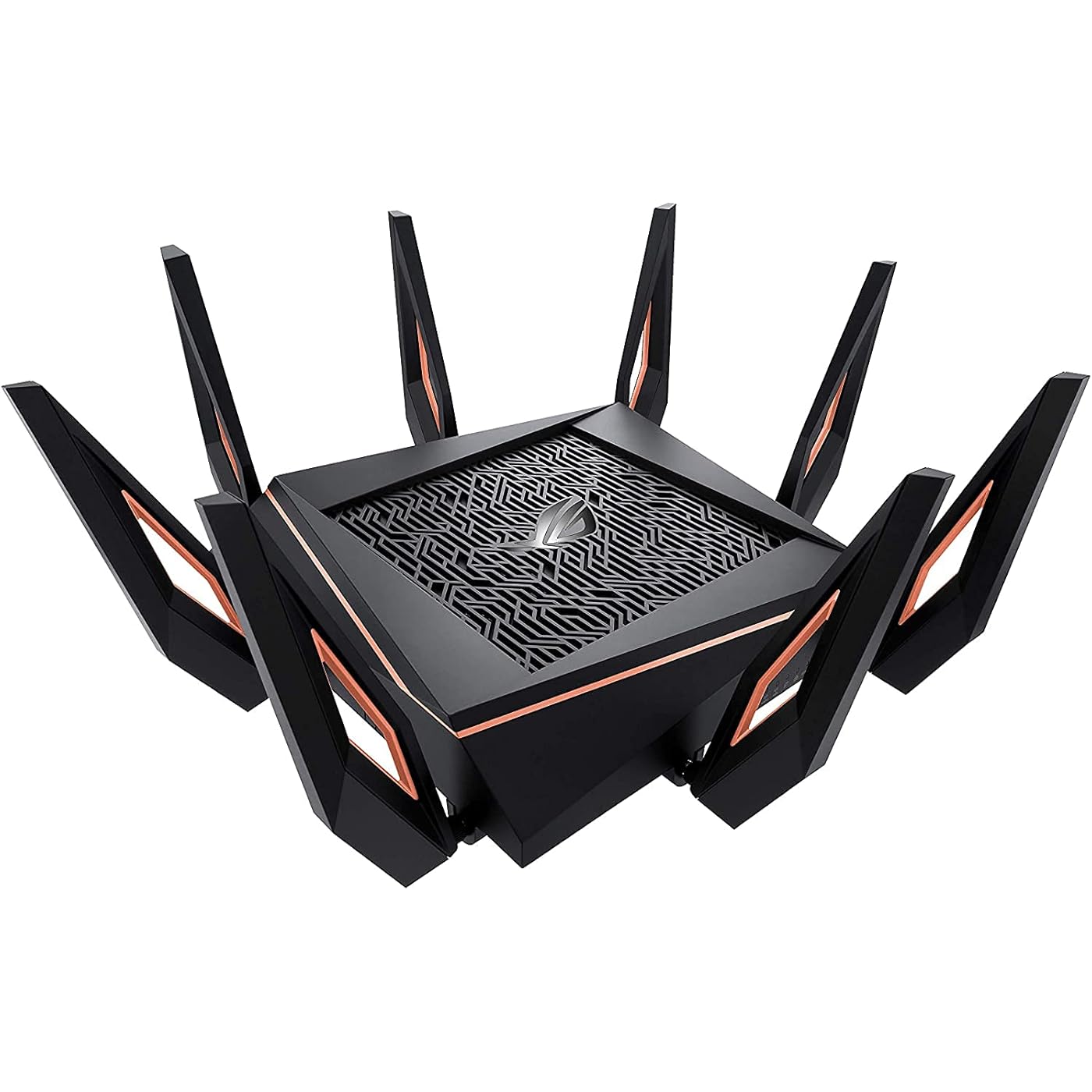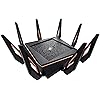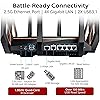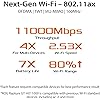




Ready to go? Add this product to your cart and select a plan during checkout. Payment plans are offered through our trusted finance partners Klarna, PayTomorrow, Affirm, Afterpay, Apple Pay, and PayPal. No-credit-needed leasing options through Acima may also be available at checkout.
Learn more about financing & leasing here.
30-day refund/replacement
To qualify for a full refund, items must be returned in their original, unused condition. If an item is returned in a used, damaged, or materially different state, you may be granted a partial refund.
To initiate a return, please visit our Returns Center.
View our full returns policy here.
Style: AX11000 | WiFi 6 | 2.5G Port
Pattern: Router
Features
Description
Built for gaming with high speed & Gigabit ISP services, the GT-AX11000 offers that fastest Wi-Fi for current 802.11AC devices as well as next Gen 802.11ax devices. The GT-AX11000 produces Gigabit speeds while providing extensive range for devices that demand Fast & consistent gaming, uploading, and streaming all at the same time.
Brand: Asus
Model Name: ROG Rapture GT-AX11000
Special Feature: WPS, Internet Security
Frequency Band Class: Tri-Band
Wireless Communication Standard: 802.11ax
Compatible Devices: Gaming Console
Frequency: 5 GHz
Recommended Uses For Product: Game,Monitoring,Security
Included Components: user manual, GT-AX11000
Connectivity Technology: USB, Ethernet
Wireless Type: 802.11ax
Brand: Asus
Series: ROG Rapture GT-AX11000
Item model number: GT-AX11000
Operating System: Linux
Item Weight: 4.1 pounds
Product Dimensions: 11.3 x 4.74 x 14.86 inches
Item Dimensions LxWxH: 11.3 x 4.74 x 14.86 inches
Color: Black
Voltage: 120240 Volts
Batteries: 1 Product Specific batteries required.
Manufacturer: ASUS Computer International Direct
Date First Available: December 26, 2018